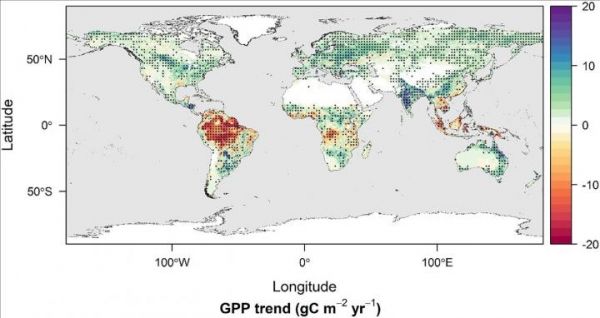More plants and longer growing seasons in the northern latitudes have converted parts of Alaska, Canada and Siberia to deeper shades of green. Some studies translate this Arctic greening to a greater global carbon uptake. But new research shows that as Earth’s climate is changing, increased carbon absorption by plants in the Arctic is being offset by a corresponding decline in the tropics.
"This is a new look at where we can expect carbon uptake to go in the future,” said scientist Rolf Reichle with the Global Modeling and Assimilation Office (GMAO) at NASA’s Goddard Space Flight Center in Greenbelt, Maryland.
Reichle is one of the authors of a study, published Dec. 17 in AGU Advances, which combines satellite observations over 35 years from the National Oceanic and Atmospheric Administration (NOAA’s) Advanced Very High Resolution Radiometer (AVHRR) with computer models, including water limitation data from NASA’s Modern-Era Retrospective analysis for Research and Applications, Version 2 (MERRA-2).
Together, these provide a more accurate estimate of global "primary productivity" – a measure of how well plants convert carbon dioxide and sunlight to energy and oxygen via photosynthesis, for the time span between 1982 to 2016.
Read more at: NASA/Goddard Space Flight Center
A map of the world shows the changes in global gross primary productivity (GPP), an indicator of carbon uptake, from 1982-2016. Each dot indicates a region with a statistically significant trend. (Photo Credit: NASA/Nima Madani)


